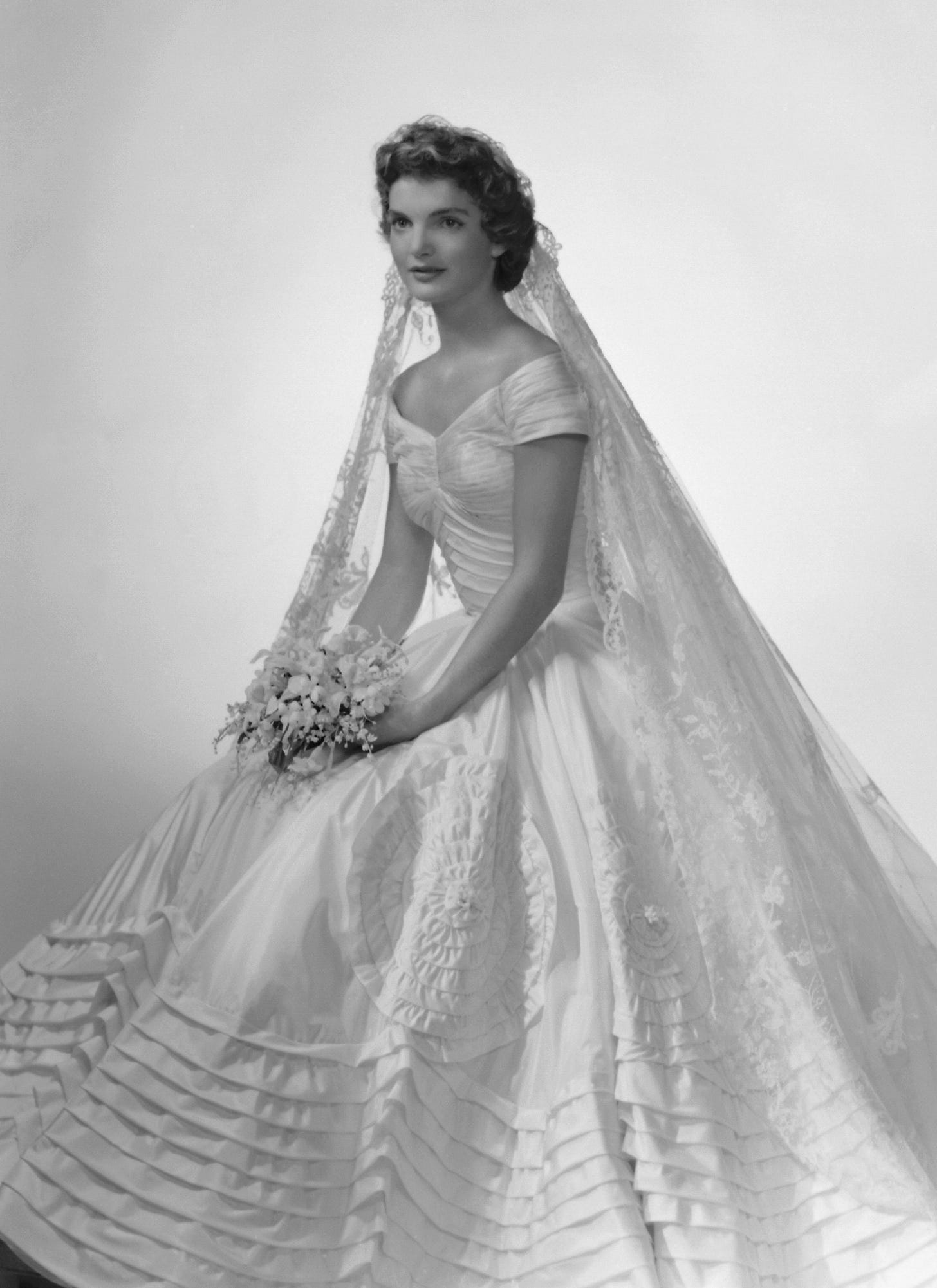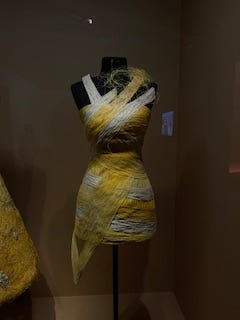The Influence of White Male Power in Women’s Fashion and Its Impact on Black Women’s Relationship with Luxury Today
Spent 3 weeks in Paris doing design research and working on this research paper!
Introduction
Luxury fashion is glamorous, aspirational, and often inaccessible has long been shaped by white male power. From its formal beginnings in the 19th century through to today’s billion-dollar global brands, the faces behind design leadership and the definitions of “taste” have overwhelmingly been white and male. Yet, the people consuming luxury especially Black women are increasingly diverse. This disconnect raises an urgent question: how has the historic dominance of white men in women’s fashion affected Black women’s relationship with luxury?
In this paper I will explore the roots of luxury fashion, highlighting the erasure of women (especially Black women) from its leadership and narrative. Drawing from historical and couture Paris exhibits, highlighting women historical designers, and analyzing modern success stories such as Miu Miu and Hermès, I will trace the gendered and racial power dynamics of fashion’s past and present. Using insights from the 2021 study Hedonism and Luxury Fashion Consumption among Black African Women in the UK, I’ll explore how societal pressures and self-identity influence Black women’s engagement with luxury today.
I. The Origins of Luxury Fashion: Male Power and Female Erasure
Luxury fashion as an institution is deeply rooted in patriarchal tradition. At the House of Worth exhibit in Petit Palais Museum, I learned about Charles Frederick Worth who founded the House of Worth in 1958 and established the first couture house in Paris and became known as the “father of haute couture.” Worth created clothing for elite women, and defined what elegance looked like. This paradox remains entrenched today: men designing for women, deciding what they should wear, and claiming cultural authority over femininity.
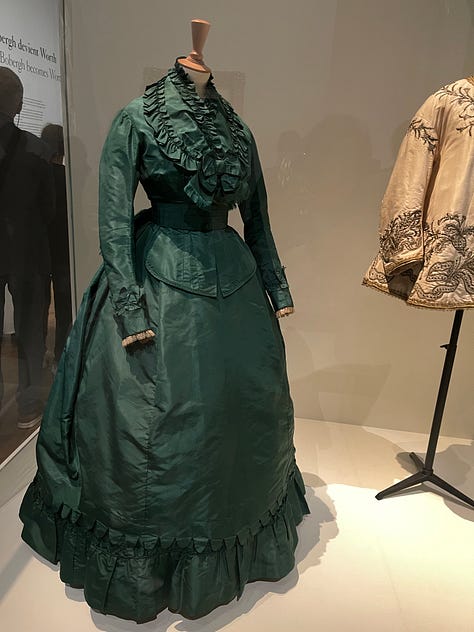
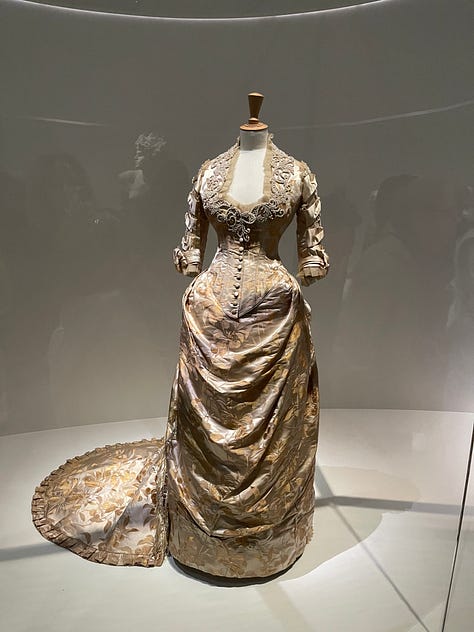
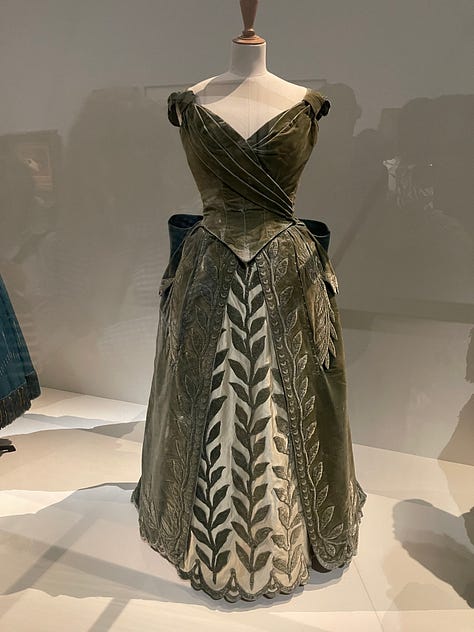
While Worth rose to fame, women designers stood beside him, often unacknowledged. Jeanne Paquin, who opened the House of Paquin in 1891 just steps from Worth’s atelier, was a creative pioneer. She redefined mourning fashion by making the color black fashionable, pairing it with vibrant linings and intricate embroidery. She was the first couturier to use live models at public events for publicity—an early PR genius. Her influence was vast, yet history remembers Worth and Poiret more vividly.
Paquin was also the first woman designer to receive the prestigious Legion d’Honneur in 1913, marking her economic and cultural contributions to France. That same year, she toured the U.S. and drew large, paying crowds eager to see her designs, and yet her legacy has been largely overshadowed by male contemporaries. Similarly, Jeanne Lanvin, whose house is still active today, introduced the “robe de style,” a silhouette influenced by 18th-century fashion. Despite her innovation, Lanvin is rarely mentioned alongside modern giants.
In the African American context, Ann Cole Lowe, a Black woman designer, made history by designing Jacqueline Kennedy’s wedding dress. The dress was celebrated globally, but Lowe was not credited at the time. Even at the height of her career, she struggled financially and was underpaid by her wealthy clients. Her salon ultimately closed due to tax issues, a tragic end for a woman who shaped elite American fashion in silence.
This was even displayed throughout the exhibits we visited such as the Golden Thread. The art of dressing from north Africa to the far east at the Musée du quai Branly that showed the women who would hand woven these silkworm threads to make these beautiful garments, who is to say that these traditional skilled techniques aren’t the true leaders of couture. Since there is an issue with lack of documentation during these times – we cannot see the total scope in which minority women contributed to women’s luxury fashion today.
These women are not exceptions, they’re the rule. Their erasure tells us that the fashion canon is not neutral: it is curated to amplify male genius while muting female labor, especially that of women of color.
II. Who Leads Now? Gendered Power in Contemporary Fashion
While women’s creative leadership in fashion has increased, it remains disproportionately rare especially in luxury fashion. Most major heritage brands have never had a woman creative director. There are a few notable exceptions from over the years: Donatella Versace who took over her brother’s brand, Versace, Miuccia Prada’s Miu Miu has become a breakout success; Anne Klein, though focused on ready-to-wear (RTW), redefined American wardrobes with her practical, coordinated collections. Still, these women are exceptions in an industry built for, and often still led by, white men.
Recent examples show what can happen when women are given creative control. Miu Miu, led by Miuccia Prada, has been called the “hottest brand in the world,” with retail sales up 93% in 2025. Its reinvention of preppy youth fashion, miniskirts, ballet flats, gender-blurring silhouettes, has connected deeply with Gen Z consumers.
At Hermès showroom visit, I learned about Nadège Vanhée-Cybulski has maintained the brand’s core values while updating them for modern audiences. Despite being one of the oldest luxury houses, Hermès remains among the most profitable, showing that female creative leadership can steer legacy brands without diluting their essence.
Yet, even with these successes, very few Black women hold positions of power in luxury. There is no Black female equivalent of Karl Lagerfeld, Hedi Slimane, or even Alessandro Michele. This exclusion at the top means the aesthetics and values that dominate luxury remain distant from the lived experiences of Black women.
III. Fashion and Social Class: The Historical Codes of Luxury
During a series of fashion exhibitions in Paris, one constant emerged: luxury has always been a tool of class distinction. This was seen in the At Musée Carnavalet: Histoire de Paris exhibit from the 18th century onward, wealth was symbolized by clothing, its silhouette, color, and fabric. These codes haven’t disappeared; they’ve simply evolved. In today’s world, brands like Chanel, Dior, and Gucci continue to serve as visual indicators of status.
Now, however, luxury is more democratized, at least in theory. With credit cards and secondhand platforms, anyone can buy into the illusion of elite taste. But for Black women, this accessibility is fraught. Historically marginalized in employment, and social visibility, Black women often face heightened pressure to present as “successful.” Fashion becomes a tool not just of expression, but of validation and survival.
This tension is at the heart of Hedonism and Luxury Fashion Consumption among Black African Women in the UK: An Empirical Study (2021). The study reveals that luxury consumption for Black women is deeply tied to societal pressures, identity, and aspirations.
IV. The Emotional Economy of Luxury for Black Women
The 2021 study highlights several motivations that drive Black African women to consume luxury: success signaling, belonging, hedonism, and self-identity. One respondent states, “How you portray yourself is how you are addressed… people want to be around successful people. The one way people can tell how successful you are is in how much you display luxury items.” (Respondent 6, Age 20-25). This desire to be seen as valuable, capable, and desirable is intensified on social media, where luxury consumption becomes both public and performative.
Luxury brands act as personality markers. The women in the study formed deep emotional attachments to brands that represented who they are or who they wish to become. Yet this attachment comes at a cost. Without equal representation in branding or leadership, Black women must emotionally labor to insert themselves into narratives not built for them. They consume brands not only for pleasure but to “manage societal expectations” and assert self-worth in a system that often overlooks them.
One powerful takeaway from the study is that Black women feel it is “unnatural” not to be style conscious. From an early age, they are taught to be hyper-aware of how they are perceived. Luxury consumption becomes a defense mechanism against invisibility, marginalization, and stereotype.
This dynamic is not merely about fashion. It is about the larger systems of patriarchy and white supremacy that define who gets to be seen, respected, and admired. The Black woman who wears Hermès is not simply buying a scarf; she is buying into a system that might finally see her.
V. Moving Toward Inclusive Luxury
Today’s luxury market is changing. Digital platforms have given rise to Black-owned luxury brands like Telfar and Hanifa, and the “Black Girl Luxury” movement is reclaiming softness, pleasure, and opulence as birthrights rather than privileges. These shifts indicate an appetite for luxury that reflects, rather than erases, Black women’s realities.
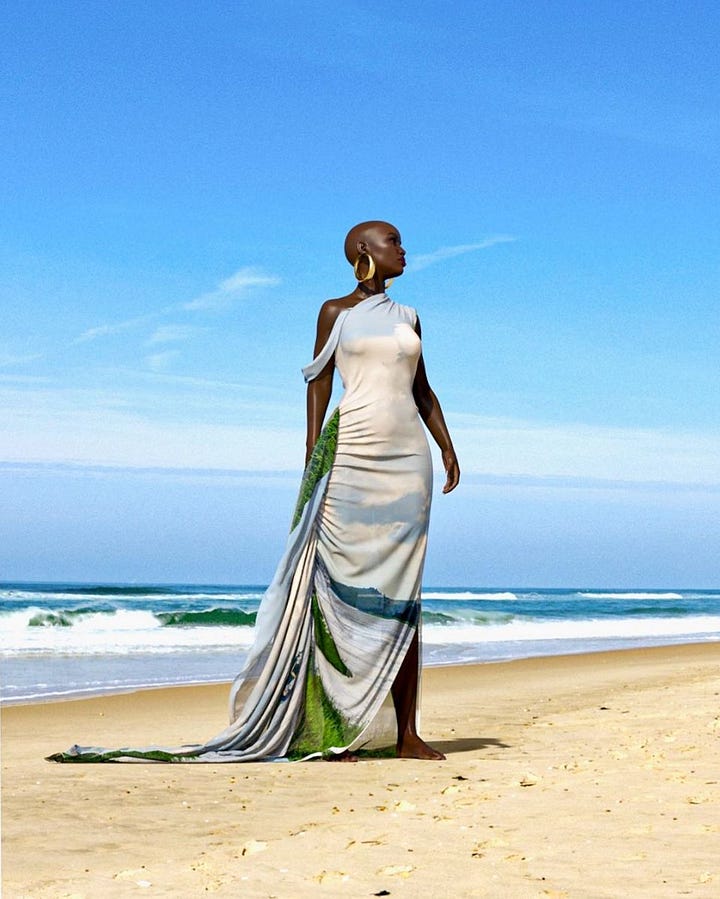
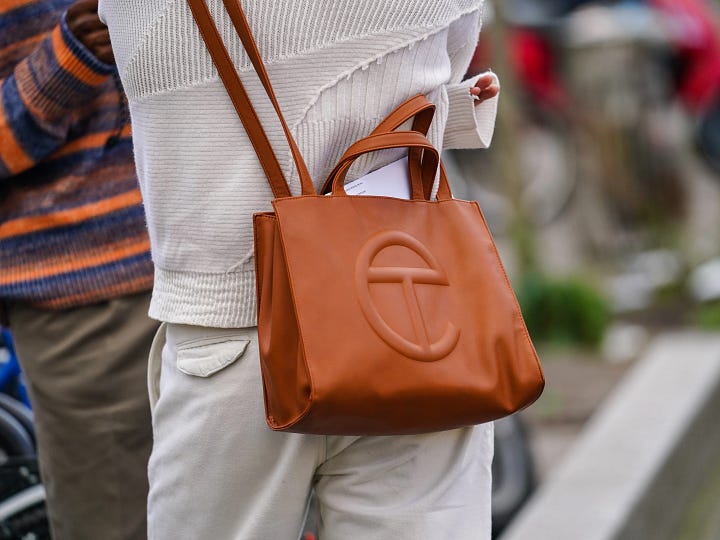
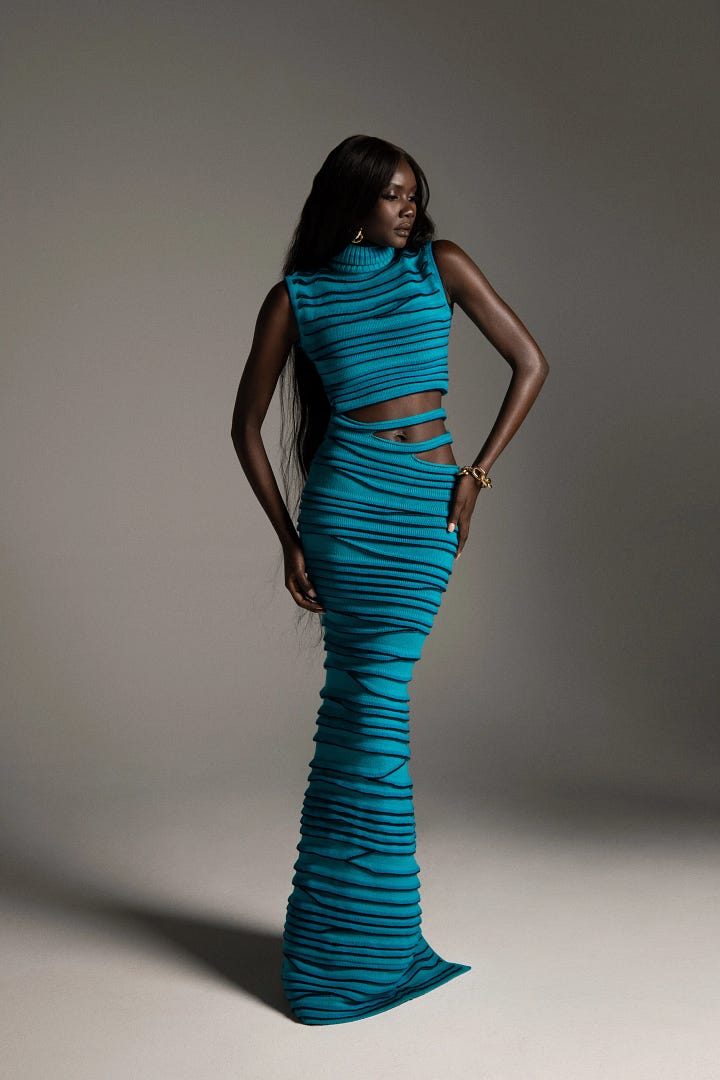
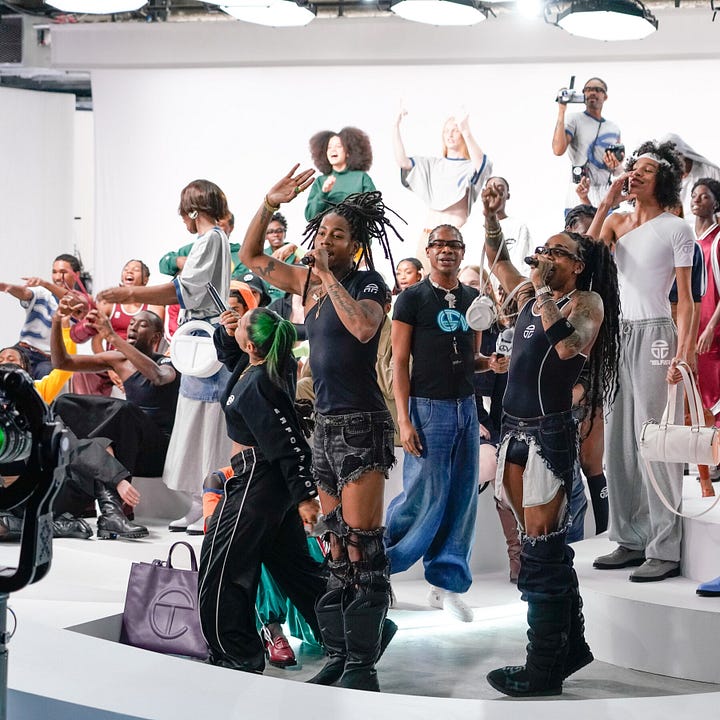
Yet, for lasting change, the industry must confront its history. That means re-centering figures like Paquin, Lanvin, and Lowe in fashion education. It means promoting Black women to leadership roles and funding their creative visions. It also means interrogating how museums, runways, and marketing campaigns continue to reinforce Eurocentric standards of beauty and taste. If we evolve this now then one day the kids of the future can walk into museums, luxury stores and see themselves in history and clothing.
We are also seeing the rise of Black-owned brand working to change the narrative internationally with brands such as Maison Chateau Rouge. This Paris-based brand is a lifestyle retail brand that celebrates African heritage through contemporary designs and clothing. They also have an NGO within the brand, Les Oiseaux Migrateurs, which supports the development of small and medium enterprises in Africa, especially assisting them with exportation. This is a brand that is working to not only change the narrative in fashion through the clothing they represent but also to bring more goods in the clothing from underrepresented communities.
As a designer myself, I carry these lessons forward. I see the need to design for, with, and as women of color. To co-create narratives that reflect lived experience, not impose a singular vision of elegance. Luxury can and should evolve from a symbol of exclusion to one of empowerment.
Conclusion
The history of fashion is a story of power. Who gets to create, who gets seen, and who gets left out. From Charles Worth to modern luxury conglomerates, white male dominance has shaped women’s fashion at every level. Women like Jeanne Paquin and Ann Lowe proved that women—especially Black women have always been visionaries in luxury, even when history chose not to remember them.
Today, Black women continue to engage with luxury in powerful yet complex ways. It is a site of aspiration, validation, and resistance. They navigate brands not just as consumers but as meaning-makers balancing personal identity with social expectation.
If fashion is to truly reflect the world it dresses, it must look beyond the white male gaze. It must honor the legacy of women erased and empower those yet to rise. Only then can luxury belong to everyone.
Works Cited
Emmanuel , Stephen, C. HEDONISM and LUXURY FASHION CONSUMPTION among BLACK AFRICAN WOMEN in the UK: AN EMPIRICAL STUDY. Emerald Publishing Limited, 4 May 2021.
Ferrier, Morwenna. ““World’s Hottest Brand”: How Miu Miu Defied Sales Plunge in Fashion Industry.” The Guardian, The Guardian, 8 Mar. 2025, www.theguardian.com/fashion/2025/mar/08/worlds-hottest-brand-how-miu-miu-defied-sales-plunge-in-fashion-industry.






